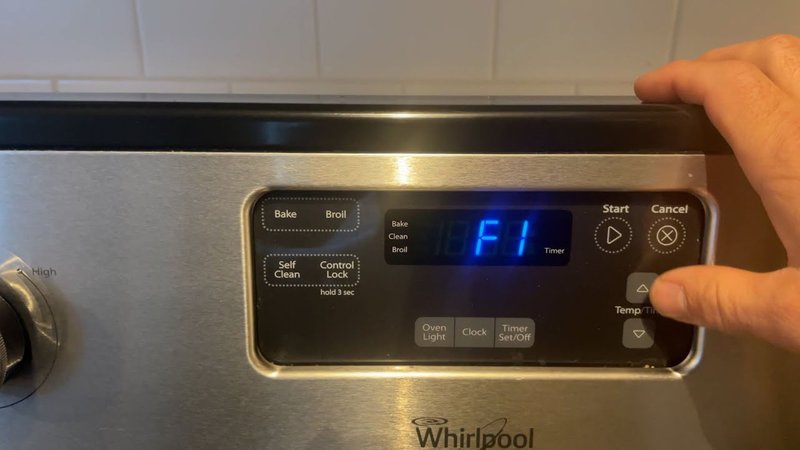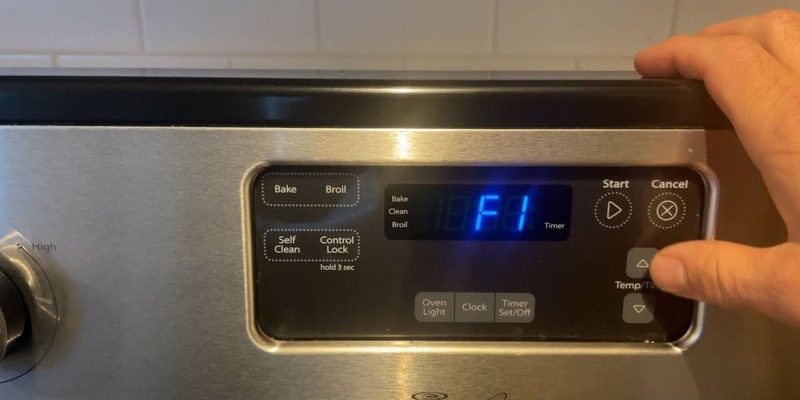
If you’re scratching your head, wondering what this F1 code actually means, you’re in the right place. This error usually indicates an issue with the touchpad or control board. In simpler terms, it’s like your microwave’s brain is having a headache and needs some assistance. While it might be tempting to ignore it or try a quick DIY fix, it’s crucial to know when to call a professional. After all, a microwave is a complex piece of machinery, and tampering with it might just make things worse.
Understanding the F1 Error Code
So, what exactly is this F1 error code? Picture it like a red flag your microwave is waving to get your attention. In most Whirlpool microwaves, when you see an F1 error, it’s a sign of trouble with the electronics—specifically the touchpad or the main control board. Just as a computer might freeze or act up due to software issues, your microwave’s error code indicates it needs some technical help.
Now, you might be wondering why this happens. Well, it’s often due to wear and tear over time. Imagine pressing the same button on a remote control day in and day out; eventually, it might get stuck or stop working. Similarly, frequent use or even a manufacturing defect can lead to this error popping up. It’s like when your smartphone’s screen starts acting weird after a particular update—it needs a closer look by someone who knows what they’re doing.
Here’s another thing to consider: while this error might seem harmless, it could prevent your microwave from functioning properly. This could mean inconsistent heating, or worse, it might not work at all. It’s a bit like having a car with a faulty ignition—it might start one day and not the next. Therefore, understanding what this code signifies is the first step to getting things back on track.
When To Attempt DIY Repairs
Now, let’s talk about what you can do before calling in the pros. You might be thinking, “Is there anything I can try myself?” Well, if you’re comfortable with basic troubleshooting, there are a few simple steps you can take. Think of it as first aid for your microwave. First, try resetting the power. Unplug the microwave for a minute or two, then plug it back in to see if the error clears. It’s similar to rebooting a computer or a smartphone when they don’t respond—a quick restart can sometimes fix small glitches.
But wait, there’s more. If resetting doesn’t work, check the connections. Ensure the touchpad isn’t stuck or dirty. Sometimes, grime or moisture can interfere with its functionality. Wipe it down gently with a dry or slightly damp cloth, being careful not to use any abrasive cleaners. It’s similar to how you’d clean a smudged screen on a tablet—gently and with care.
However, it’s important to know when to stop. If these basic steps don’t work, it might be time to call in a technician. Attempting more advanced repairs without proper knowledge can be a bit like trying to fix a leaky pipe without the right tools—it could lead to a bigger mess. Remember, safety should always come first, and if you’re unsure, professional help is your best bet.
Professional Help: When and Why It’s Necessary
So, how do you know when it’s time to wave the white flag and call a technician? If your microwave is still flashing that stubborn F1 code after your initial troubleshooting, it might be a sign of a deeper issue. Just like how you’d call a doctor if a cough persists, your microwave needs its own sort of ‘doctor’ to diagnose and fix the problem.
Moreover, opening up a microwave isn’t like changing a light bulb—it involves dealing with electrical components that can be dangerous if handled incorrectly. Think of it as tinkering with a car engine without the right training; it’s better left to someone who has the right expertise. A certified technician will have the right tools and knowledge to safely and effectively tackle the issue.
Another reason to rely on professional help is warranty concerns. If your microwave is still under warranty, attempting DIY repairs could invalidate it. It’s like fixing a new phone yourself and then finding out you can’t get a replacement because you opened it up. Instead, having a licensed technician take a look will ensure that your microwave is repaired without compromising any warranties or further damaging the unit.
Preventative Measures and Final Thoughts
Before we wrap up, let’s touch on some preventative measures you can take to avoid running into the F1 error in the future. Just like regular check-ups can keep you healthy, maintaining your appliances can extend their lifespan. Clean the control panel regularly to prevent dirt buildup, and ensure the microwave is placed in a well-ventilated area to avoid overheating. It’s a little like keeping your computer free from dust to prevent it from slowing down.
Additionally, always use the microwave according to the manufacturer’s guidelines. Avoid slamming the door or pressing the buttons too hard—treat it with the same care you’d give a favorite gadget.
In conclusion, while the F1 error code can be frustrating, understanding what it means and knowing when to call in a professional can save you time, money, and a lot of hassle. Remember, your microwave is an essential helper in the kitchen. So when it’s feeling under the weather, a little attention from a skilled technician can get it back to working order in no time.
